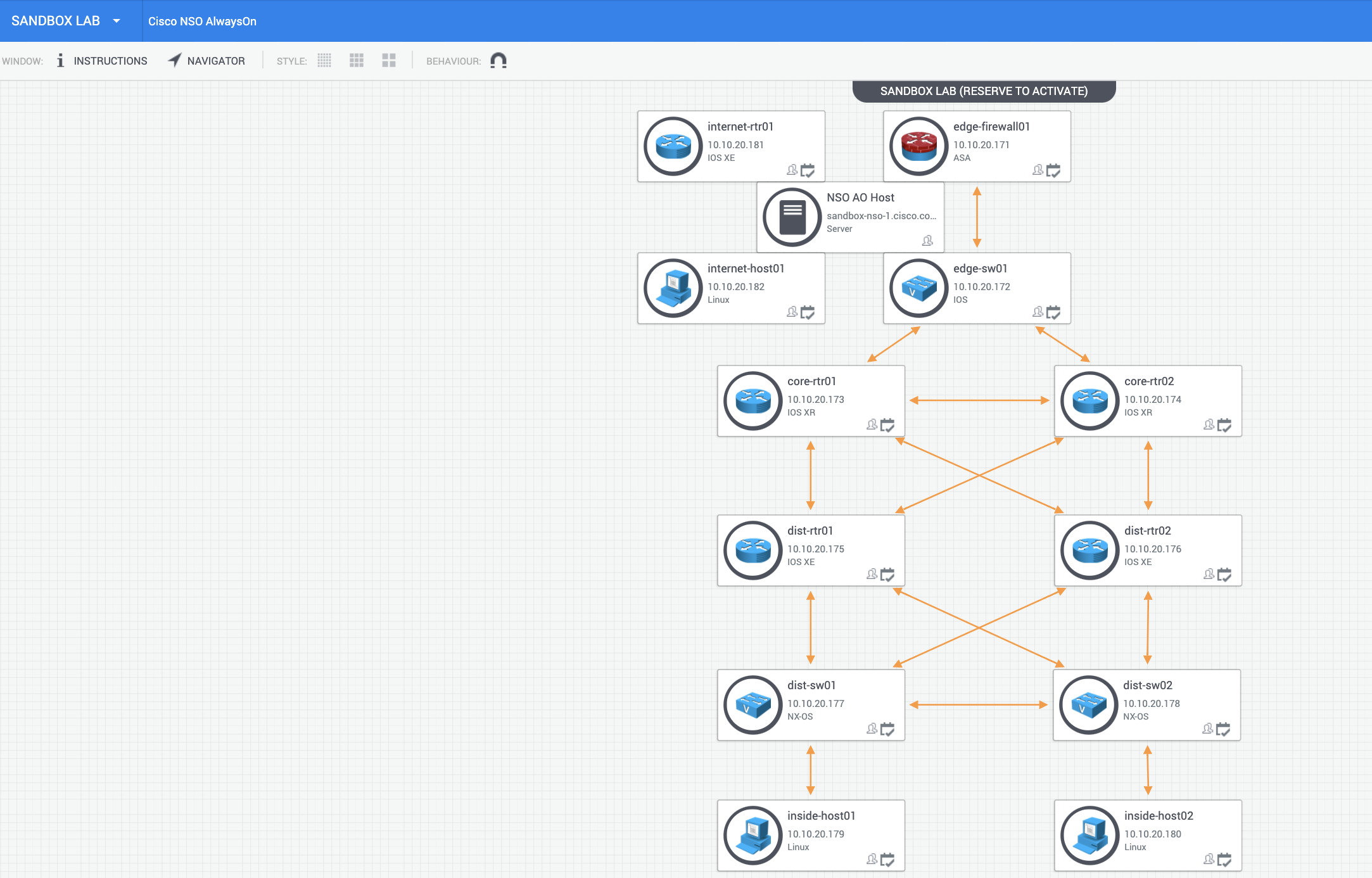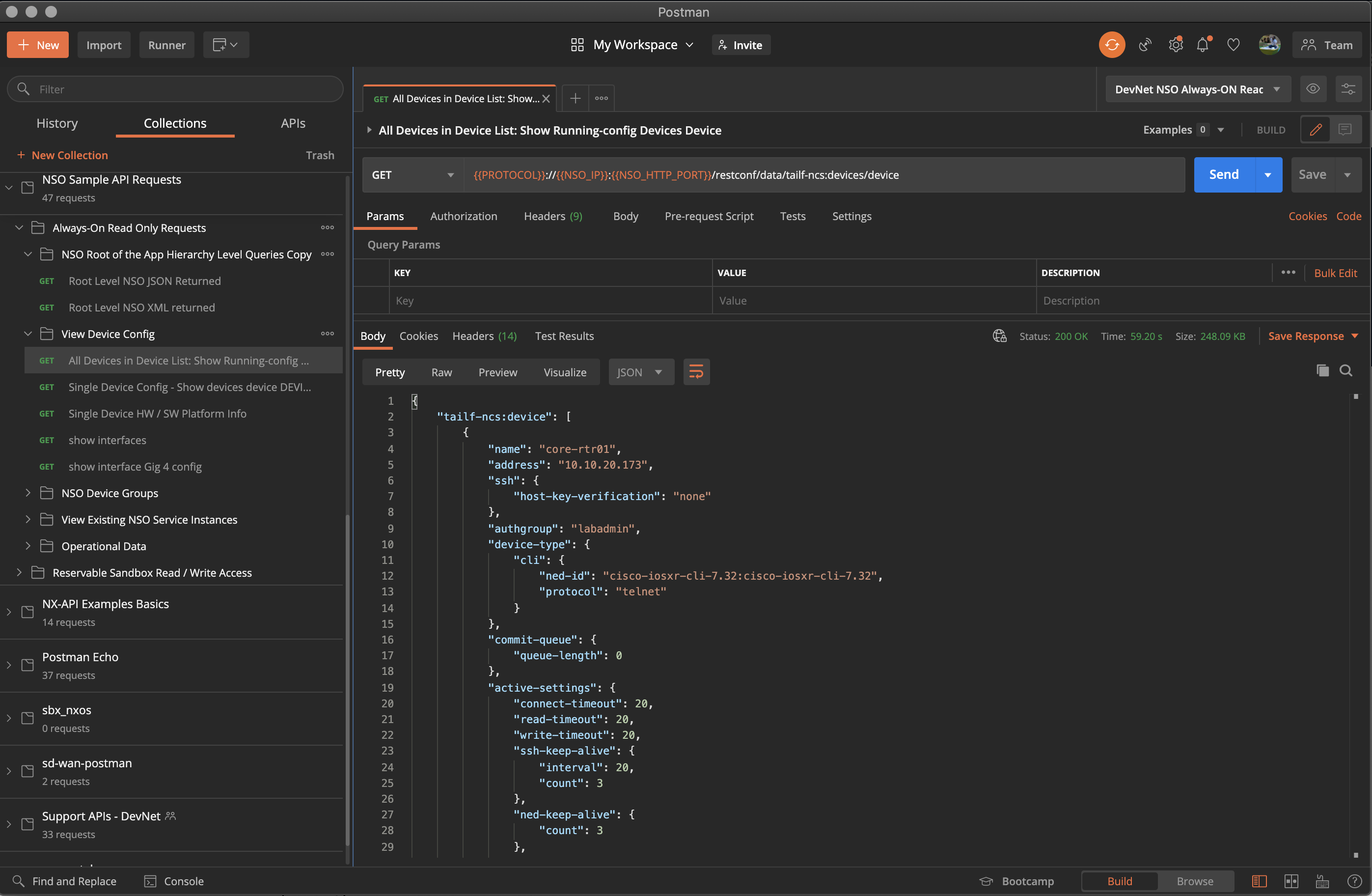New NSO Always-On DevNet Sandbox

Today’s model-driven programmability makes the network a core foundation for revenue generation. Therefore, companies must implement network orchestration to simplify their entire lifecycle management for services. For virtualized networks, this means transparent orchestration that spans multiple domains in the network and includes network functions virtualization (NFV), and software-defined networking (SDN), and the traditional physical network with all its components.
This is where Network Service Orchestration or NSO steps up. NSO is a model-driven (YANG) platform for automating your network orchestration. It supports multi-vendor networks through a rich variety of Network Element Drivers (NEDs). Supporting it supports the process of validation and implementing, as well as abstracting network configuration and network services, and providing support for the entire transformation into intent-based networking.
How does it work?
NSO gathers, parses, and stores the configuration state of the network devices it manages in a configuration database (CDB). Users and other applications can then ask NSO to create, read, update, or delete configurations in a programmatic way either ad hoc or through customizable network services. NSO uses software packages called Network Element Drivers (NEDs) to facilitate telnet, SSH, or API interactions with the devices that it manages. The NED provides an abstraction layer that reads in the device’s running configuration and parses it into a data-model-validated snapshot in the CDB.
The NEDs also allow for the reverse – i.e., creating network configuration from CDB data inputs and then sending the configurations to the network devices. There are hundreds of NEDs covering all the Cisco platforms (including IOS-XE, IOS-XR, NX-OS, and ASA) and all major non-Cisco platforms.
Want to get hands-on now?
You’re in luck! Check out the new DevNet NSO sandbox. You’ll find a production NSO server deployed to manage the multi-platform network within the sandbox environment lab. This network is made up of Cisco NX-OS, IOS, IOS XE, IOS XR, and ASA devices, and includes Linux hosts which can be used as clients for connectivity testing.

This always-on sandbox lab provides access to everything you need to explore the APIs for NSO, as well as develop network automation packages and services for use in your networks. If you are just getting started with NSO APIs check out the new updated Postman Collection which has been updated to work with the new always-on NSO Sandbox.

Now you have everything you need to get started with NSO – Import, the collection in your Postman client set the environment for the new Always-On NSO sandbox and start making API calls today! You can find the new DevNet NSO sandbox here, no reservation is required.
And for all things NSO, visit and bookmark the DevNet NSO Dev Center.
Have a comment or question? Please leave me a note in the comments section below.
Share:

